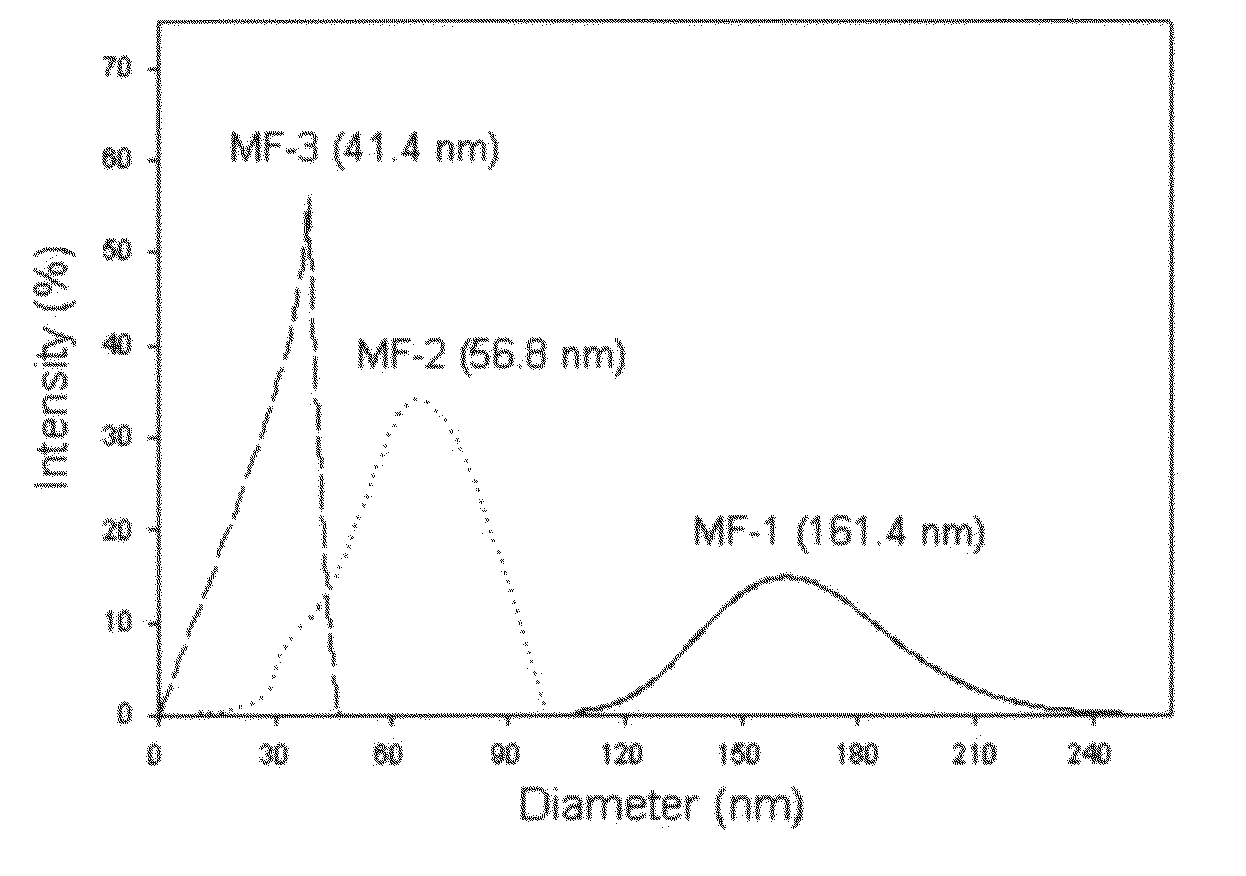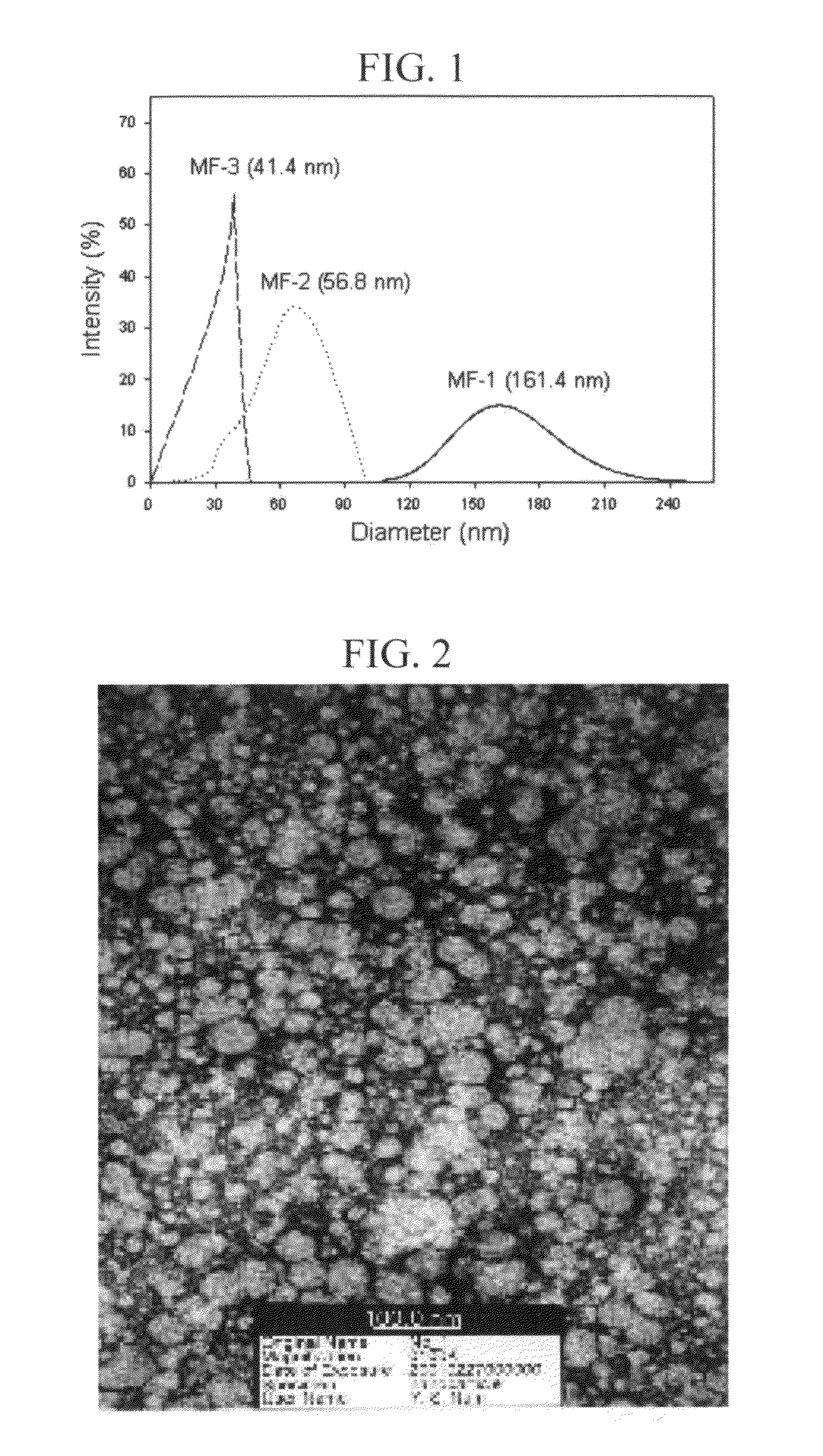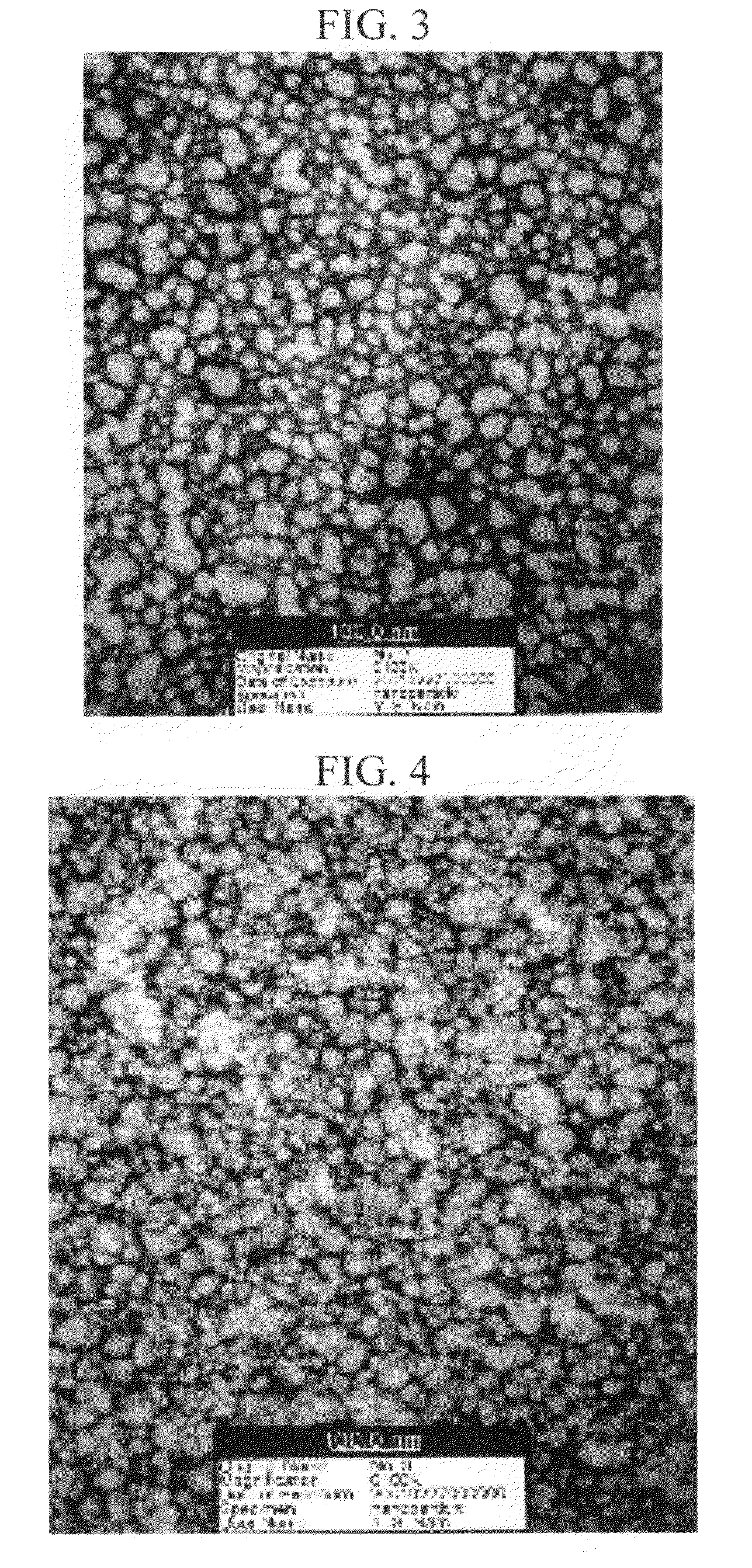Percutaneous controlled releasing material using nano-sized polymer particles and external application agent containing the same
a technology of nano-sized polymer particles and release materials, which is applied in the direction of body powders, hair cosmetics, make-up, etc., can solve the problems of easy oxidation and dissolution of active agents or agents, easy breakage of the membrane of the emulsion, and difficult control, so as to achieve good physiologic properties, good physiologic properties, and good physiologic properties
- Summary
- Abstract
- Description
- Claims
- Application Information
AI Technical Summary
Benefits of technology
Problems solved by technology
Method used
Image
Examples
examples
[0041]The method of preparing the nano particles containing the active agents is not restricted, although PMMA (polymethylmetacrylate) is used as a polymer to produce nano-particles in the present examples for purposes of illustrating, among other features and benefits, the capabilities of the present invention. Molecular weights of between about 5,000 and about 1,000,000 of the PMMAs may be used, and the PMMA having molecular weight of 75,000 is used in the present examples for purposes of example but not limitation. Active agents to be contained in the nanoparticles are not restricted, and retinol, coenzyme Q10 (hereafter, referred as co-Q10) and resveratrol are used in the present examples.
[0042]In the present examples, a microfluidizer (Microfluidics Corporation, U.S.A.) is used for making emulsions for unique and small nanometer sized particles. Pressure is controlled between 500 bar and 1,500 bar and flow is controlled between 20 ml / min to 150 ml / min. Surfactant is used to emu...
examples 1 to 9
[0046]PMMA (molecular weight 75,000) was used as a polymer, and retinol, co-Q10 and resveratrol were used as active agents. Each of 2.52 g of co-Q10 as an active agent and 4.00 g of PMMA as a polymer were homogeneously dissolved in 56 ml of dichloromethane to make the oil phase. Then, the above oil phase was added to 400 ml of an aqueous, solution in which 2 g of a surfactant (SLS) was dissolved to accomplish the first emulsification. For the first emulsification, the above mixture was treated by the homogenizing-mixer at 5,000 rpm for 3 minutes, then proceeded into the microfluidizer to prepare nanometer-sized emulsion particles. By varying the number of repeated treatments, the diameters of the emulsion particles could be controlled, differentiated, and / or modified. The above nano-emulsions were stirred and dichloromethane was extracted out to harden the nano-emulsion. Dichloromethane used for dissolving the polymer and the active agent was extracted to the aqueous phase, and then...
examples 10 to 18
[0054]PMMA (molecular weight 75,000) was used as a polymer, and retinol, co-Q10 and resveratrol were used as active agents. Each of 0.25 g of co-Q10 as an active agent was dissolved in three flasks with 56 ml of dichloromethane, then 0.5 g, 1 g or 2 g of PMMA was added to each of the above flasks to prepare phase 1. Then, 4 g of PEG 60 hydrogenated castor oil was homogeneously dissolved in each of the flasks. Then, 4500 ml of distilled water was added thereto. This method has the advantage of leading to a spontaneous preparation of nano-particles, which uses the general solubilization. Dichloromethane was removed from phase 1 by solvent-extraction. Then, Nano-particles were diluted and concentrated to quantitatively arrange the contents of the active agents contained therein to 2%. Each of the nano particles containing retinol and resveratrol were prepared in the same manner. The results are shown in Table 2.
TABLE 2Contents of theContents ofAverageActive agentPMMA (g)Active agentdia...
PUM
 Login to View More
Login to View More Abstract
Description
Claims
Application Information
 Login to View More
Login to View More - R&D
- Intellectual Property
- Life Sciences
- Materials
- Tech Scout
- Unparalleled Data Quality
- Higher Quality Content
- 60% Fewer Hallucinations
Browse by: Latest US Patents, China's latest patents, Technical Efficacy Thesaurus, Application Domain, Technology Topic, Popular Technical Reports.
© 2025 PatSnap. All rights reserved.Legal|Privacy policy|Modern Slavery Act Transparency Statement|Sitemap|About US| Contact US: help@patsnap.com



